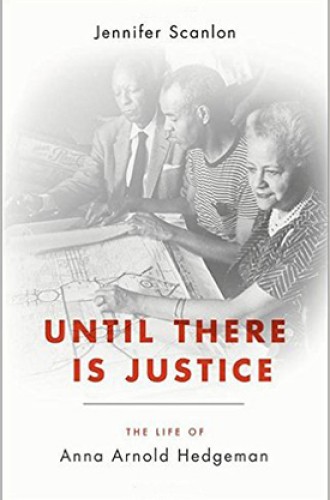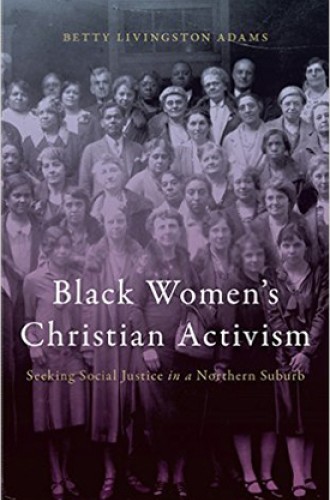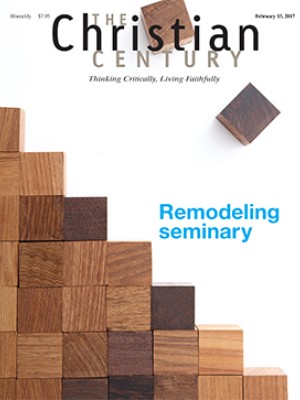When black women lead
A century before Alicia Garza came Anna Arnold Hedgeman, Violet Johnson, and Florence Spearing Randolph.
These two books expand our understanding of black women’s activism and their attendant democratic visions. Both make important contributions to black freedom studies, a growing subfield of American history.
Anna Arnold Hedgeman (1899–1990) was a teacher, political operative, and organizer best known as the only woman on the planning team for the 1963 March on Washington. She had engaged in decades of movement work before the march: she led black YWCA chapters in Ohio, New Jersey, and New York in the 1920s; teamed up with A. Philip Randolph and his budding March on Washington movement in the 1930s; and worked in politics—in the New York City mayor’s office, and in the federal government lobbying on behalf of the Fair Employment Practices Committee in the 1940s. Indeed, Hedgeman’s life provides a view of the decades of organizing that preceded what Bayard Rustin would later call the “classical” phase of the civil rights movement, from 1955 to 1965. When Martin Luther King Jr. was still a child, Hedgeman was among a cadre of black women and men who developed the networks and strategies that provided the groundwork for King’s movement.
Jennifer Scanlon illumines Hedgeman’s feminist contributions (she was among the founders of the National Organization for Women), showing that for Hedgeman and her colleagues, issues of race and sex were never separate. To be a black woman means being black in a different way than for a black man, and to be a black woman means being a woman in a different way than for a white woman. For all people, Scanlon shows, race is sexualized and sex is racialized.
Read our latest issue or browse back issues.
A biography of Hedgeman was long overdue, and Scanlon’s work confirms that Hedgeman has much to teach us today. Hedgeman’s decades-long commitment to coalition building anticipates the kinds of political organizing needed today. Furthermore, Hedgeman was notable for her willingness to listen and learn from younger Black Power activists, and she encouraged her colleagues to do the same. Intergenerational organizing remains rare in progressive circles.
Scanlon, a professor of gender and women’s studies, is careful to note the limitations Hedgeman experienced despite her prodigious talent. “Hedgeman could easily draw a crowd of five hundred when she gave a speech, but it too often failed to translate into other kinds of power.” Scanlon also notes that Hedgeman was among a group of activist women who did not have children or conventional marriages. I wish she had included more about what this might have meant for these women in terms of sexual and gender roles.
Black Women’s Christian Activism examines turn-of-the-century Summit, New Jersey, a crucial site in the black freedom struggle. Betty Livingston Adams follows the fascinating careers of Violet Johnson (1870–1939) and Florence Spearing Randolph (1866–1951), black women born in the South following emancipation, who traveled to New York City to find work. Johnson moved to New Jersey with her employer, for whom she was a live-in maid. Livingston Adams points out that poor women, often women of color (then as now), enabled suburban life to flourish by providing services in housekeeping and child care.
When Johnson arrived in New Jersey in 1897 she started a Bible study that, within a year, became the first Baptist church in the area. According to Livingston Adams, Johnson’s church shows how “white middle class migration to the suburbs expanded the geography of black women’s labor and, concomitantly, the ecclesiastical reach of black Protestants.”
Randolph arrived in Summit in 1925 with an appointment to lead an AME Zion congregation. Licensed as an evangelist, she was revered for her preaching ability. A protégé of Eli George Biddle, former Civil War chaplain and Yale-trained classicist, Randolph brought to Summit holiness evangelism and became one of the few women to be ordained an elder and given full responsibility for leading a church.
This book is a primer in progressive religion of the era. Johnson and Randolph were active in the Woman’s Christian Temperance Union, and they lobbied for affordable housing. Johnson founded a settlement house for black women workers. Johnson, Randolph, and other black women of the era created religious and political platforms for themselves when most such venues were restricted to white males. Livingston Adams skillfully deploys many kinds of histories—labor, medical, economic—to demonstrate how “twentieth century suburban segregation was no accident.”
Neither Scanlon nor Livingston Adams is trained in theology or religious studies, and the claims each makes about their subjects’ religious arguments beg for further elaboration. Scanlon notes Hedgeman’s conviction that Jesus “was an active God who supported political and civic activism, and she felt a need to share her revolutionary inspiration with others,” but misses how Hedgeman was part of a centuries-long black theological tradition that testifies to how God is active in the world and that the gospel demands justice in the here and now for the poor and rejected. (Hedgeman’s contemporary Benjamin Mays offers a compelling account of this black American tradition of God-talk in his 1939 The Negro’s God as Reflected His Literature.) An important part of what Scanlon misses, then, is that Hedgeman’s Christianity was particularly a black Christianity.
Largely missing from Livingston Adams’s account is analysis of religious history and the theological content of the women’s activism, speaking, and preaching. Although the book includes one of Randolph’s prayers, it neglects sermons, speeches, and other public pronouncements by Randolph and Johnson. Thus, readers miss what may be important details of these two women’s religious and democratic visions.
Regardless, readers who care about American religion and democracy have much to glean from these books, which document how black women have shaped the social, political, and religious landscapes. Both depict black women as authors and agents of democratic change and as innovative theological thinkers and religious leaders.








